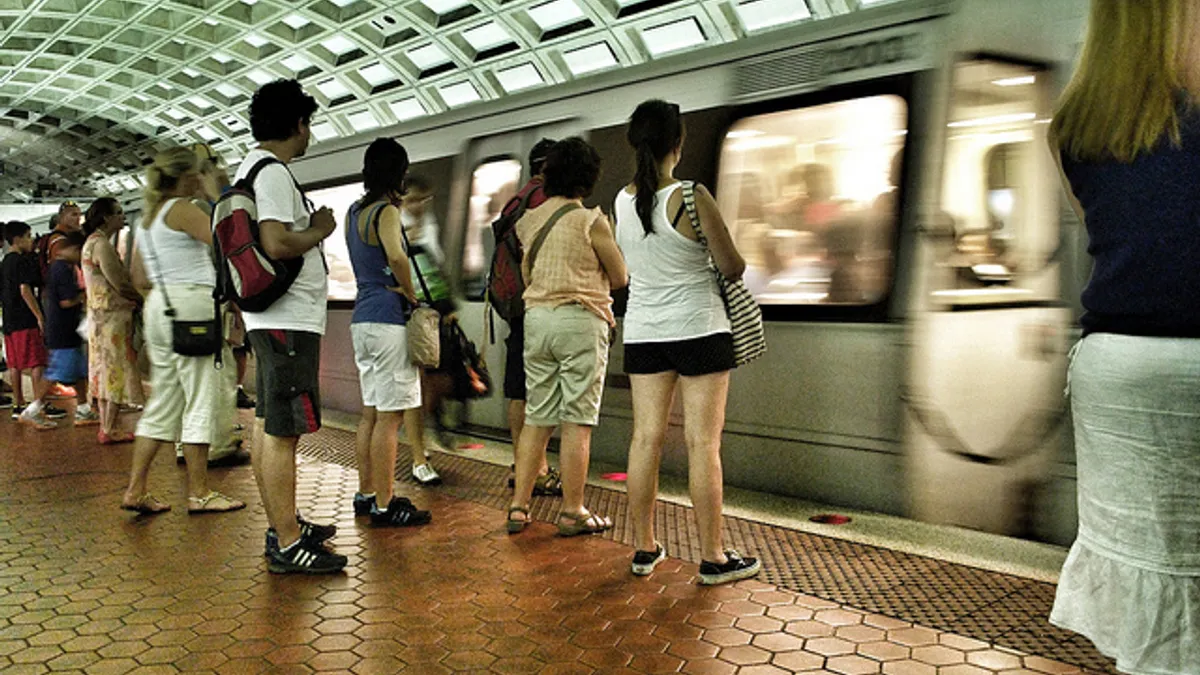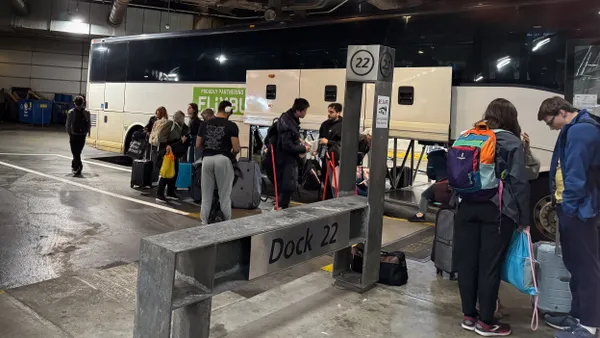Dive Brief:
-
The Washington Metropolitan Area Transit Authority (WMATA) has released requests for proposal (RFPs) to upgrade and/or install digital infrastructure to modernize its communication with passengers, as first reported by WTOP. One project would boost advertising capabilities and the other would help those with impaired vision.
-
The first RFP seeks a business to develop and implement out-of-home (OOH) advertising programs that use digital screens and sensors to engage with riders and people nearby to boost ad revenue. WMATA expressed interest in beacons and related Bluetooth- or WiFi-enabled technologies that interact with mobile devices and collect data, such as demographic information, to display targeted ads.
-
The second RFP seeks a partner for deploying an audio-based navigation system that would help customers, especially those who are visually impaired, with real-time wayfinding. The intention is to install beacons or similar tech along the bus system and at rail stations. The beacons would interact with an app that provides audio cues to guide users to their bus stop or transfer point.
Dive Insight:
WMATA began a build-out of its digital advertising screens in 2016 and revenue from the screens has grown significantly since then. The transit agency's current advertising contract expires June 30, 2020. WMATA anticipates awarding the new contract on or around November 20, 2019 and estimates work could start around July 1, 2020.
WMATA is trying to better manage advertising within the system to boost revenue as operating costs increase. The RFP documents state the agency would like to add at least 1,500 digital screens within the first five years of the contract.
Interactive and targeted advertising has boomed in the past five years. Transit agencies are starting to install or looking into digital screens with sensors to "engage" with users throughout the system. Targeted advertising from collected cell phone data is becoming more prevalent among other outdoor advertising opportunities as well.
"Industry trends confirm WMATA’s position that innovation is the key to increasing revenues from its out of home assets," the procurement documents state. The contract winner would provide "interactive and wireless advertising technologies, advertising to targeted populations, and new and emerging forms of out of home advertising and engagement," as well as "propose opportunities to monetize the data collected from the devices, technologies and programs developed."
The RFP contains an entire section on cybersecurity requirements, notification of any breaches and ensuing investigation into breaches. Subcontractors will be required to protect any sensitive data to which they gain access, and the contract winner will not sell or share information without WMATA's consent.
The bus system beacon program is one example of a growing effort to assist people with disabilities in getting around cities. For example, Chicago launched a program to expand its accessible pedestrian crossing signals at intersections to provide audio cues to the visually impaired. WMATA's bus beacon program would operate in a similar vein.
Austin, TX ran a small pilot last last year in which connected infrastructure was installed at 15 downtown bus stops. Testers used an app that interacted with the sensors to guide them to bus stops and announce arrival times or service alerts. Eight of the 10 testers said the service improved their bus riding experience.












